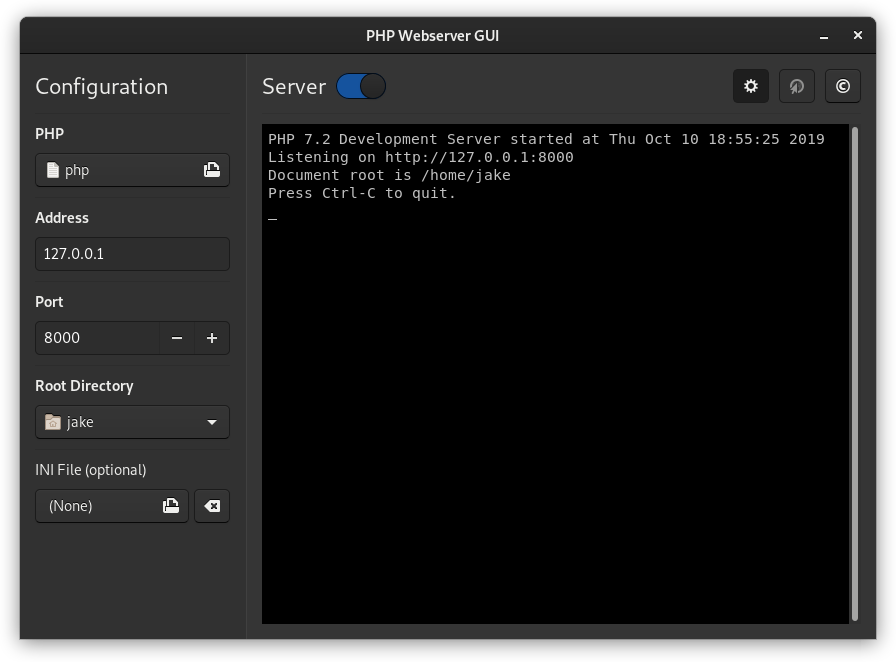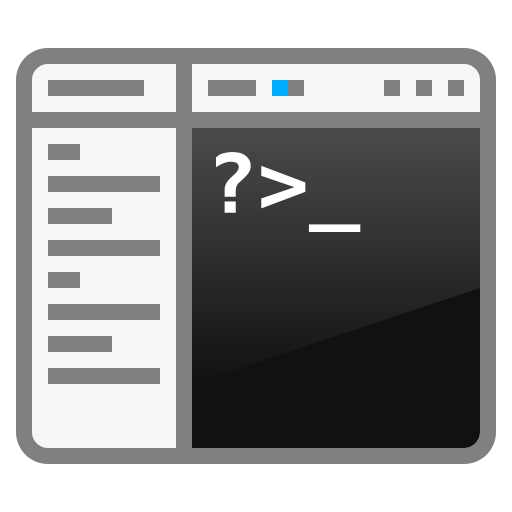

About

PHP has included a built-in web server in its CLI SAPI since version 5.4, it is not a fully-featured web server and it should not be used on a public network or to host an actual website, but it is useful for application development and testing purposes.
The problem: As a CLI feature, it requires a specific command to use, which is easy to forget and gets buried in your terminal's history. The solution: A GTK+ interface that lets you choose the PHP executable, IP address or hostname, port number, root directory, and INI file graphically.
Downloads
Contributing
Troubleshooting
To use the software you will need the following libraries and their dependencies installed...
| Name | Version | Package | Notes |
|---|---|---|---|
| GTK+ | 3.10+ |
libgtk-3-0
|
If you use GNOME, you already have this installed. |
| Glib | 2.0+ |
libglib2.0-0
|
If you use GNOME, you already have this installed. |
| VTE | 0.48+ |
libvte-2.91-0
|
If you use GNOME Terminal, you already have this installed. |
| PHP | any |
php-cli
|
You may need to specify a version in the package name, like
php7.2-cli.
You may also be able to install a dependency package named simply
php,
which will install other useful PHP libraries.
|
To compile the software you will need the following libraries and their dependencies installed...
| Name | Version | Package | Notes |
|---|---|---|---|
| GTK+ | 3.10+ |
libgtk-3-dev
|
|
| GLib | 2.0+ |
libglib2.0-dev-bin
|
|
| VTE | 0.48+ |
libvte-2.91-dev
|
Check the version provided by your package manager, not the version in the package name. The version in the package name is unimportant. |
Depending on which GNU/Linux distribution you are using, the package names listed above may differ slightly. If the package names do differ, you may need to adjust the Makefile to use these different package names. I am open to suggestions on how to improve compatibility with different distributions.